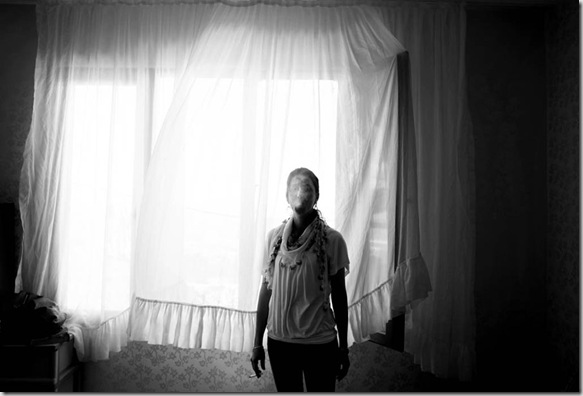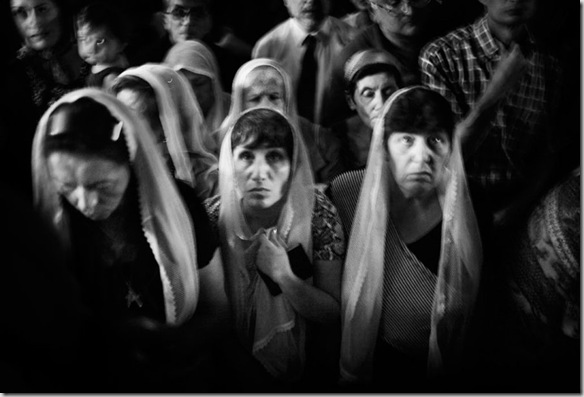The murder of some one million Armenians in Ottoman Turkey nearly a century ago disappeared into the void of forgotten history, as was the express intention of the perpetrators. My ongoing project, “Memory of Trees”, is a visual commemoration of those million and an active search for evidence of their existence.
The bloody events of 1915-1918 have been recognized by 21 UN member countries (and 43 states of the U.S.) as the “Armenian Genocide” - a definition Turkey vehemently denies. For me, the idea of this denied past is terribly alluring, and I want to refute the official historical narrative. I am further intrigued when Turkey threatens countries like France and the USA for mentioning genocide. Inside Turkey, novelists and publishers are convicted for printing it. Turkish Armenian journalist Hrant Dink is murdered for defending it. And one can’t help asking what is being protected, hidden – what has happened on this land.
With the collapse of the Ottoman Empire in the early 1900s, a new Turkish nationalism took hold. The fledgling government's plan to unite all ethnically Turkic people left little room for its Christian Armenian citizens. On April 24, 1915 Ottoman authorities issued an order for the arrest and deportation of several hundred Armenian intellectuals in Istanbul. This act marked the beginning of the extermination of the Armenian population.
Before invading Poland in 1939, Adolf Hitler asked his commanders, “Who, after all, speaks today of the annihilation of the Armenians?” This project is the antithesis of this reasoning. Since March 2007, I have traveled through Turkey, Armenia, Syria, Lebanon and Israel, sifting through what remains of this Armenian legacy.
A place that is central to this project is the village of Agacli, located in southeastern Turkey. In Turkish it means “place of trees.” Recently, the Kurdish inhabitants of this former Armenian village revived a scarf-weaving tradition that cultivates silkworms in the same trees used by the Armenians nearly a century ago. The trees are all that remain of the Armenian’s existence here. They symbolize their enduring legacy on their ancient homeland, hence the title for my project.
Now, with the assistance of the Alexia Foundation, I will create the intimate interior of this project with portraits of Turkey’s hidden Armenians - individuals who identify as Muslim Turks but have Armenian ancestry. During the genocide, some Armenians escaped death or deportation by converting to Islam. If children, they were adopted, given Turkish names, and assimilated. Various sources estimate the number ranging from 80,000 to as high as 300,000 in 1918. These Armenians kept their true identity a secret, even from their own children, and until very recently they have existed in quiescence. However, Turkish society is slowly transforming and people have started to question outdated orthodoxies. For a growing number of hidden Armenians, in parallel with the mulberry trees of Agacli, the time has come to reveal their true history – at least to me. Of those people I have contacted, about half have agreed to be photographed under the condition that I do not reveal their faces, while the rest are completely open. This visual contrast will illuminate the reality of living as an Armenian in Turkey today.
I will visit Sadik Bakircioglu’s family in central Anatolia. His mother is a crypto-Armenian, and says she goes to the mosque, but, “When I pray, I’m addressing Jesus Christ.” There are also the families of Agacli - the place of trees in my project - who know of their Armenian ancestry but identify as Kurds. For Bahar Bal, 27, this dual identity presents a heavy burden: not only is she trying to trace her “infidel” Armenian roots, but as a Kurdish minority she also suffers through Turkey’s other, more recent war. These are only samples of the opportunities that exist.
The world is watching Turkey’s behavior, especially as they consider EU membership. The Turkish ambassador to France was recalled in December after France voted in favor of a controversial genocide bill. And in the US, a longstanding military alliance is threatened. US Foreign Affairs Committee member Howard Berman remarked, “As crimes of genocide continue to plague the world, Turkey’s policy of denying the Armenian Genocide gives license to those who perpetrate genocide everywhere.”
In line with the mission of the Alexia Foundation, this work speaks to the importance of memory and the need for reconciliation. Without a doubt, the legacy of the Armenian Genocide lives on. But, as one survivor expressed, “What is the legacy of silence?”

The Armenian Holy Cross Church, built in the 10th century by an Armenian King, is seen from a ferryboat on the island of Akhtamar in Lake Van, Turkey. The church is possibly the most precious symbol of Armenian presence in Turkey and is a popular pilgrimage site today. ©Kathryn Cook

An Armenian woman attends a service at the Holy Mother of God Armenian Church in Vakifli, Turkey. Less than 30 Armenian families populate the small town and surrounding area, which is located near the Turkish border with Syria. Although Armenians are allowed to celebrate their traditions in Turkey, many fear asserting their ethnic origins, which means living in near silence to avoid trouble. ©Kathryn Cook

Children play in the courtyard of the old Ihlasiye Madresesi, or religious school, in Bitlis, Turkey. Bitlis's population was half Armenian before 1915, when the Russians advanced on Bitlis and the Ottoman Turks emptied the town of Armenians - most of whom were massacred. Alexia Foundation

The portrait of an Armenian couple is seen in Ordu, Turkey. Most of the Armenians from Ordu and the Black Sea were deported or massacred. There are less than ten Armenians that now live in Ordu, and they do not celebrate Armenian traditions for fear of asserting their ethnic origins. ©Kathryn Cook

A genocide survivor is seen in his home in Gyumri, Armenia. ©Kathryn Cook

A field is seen just outside of Erzerum, Turkey along an infamous deportation route that left almost no survivors, according to survivor documentation and accounts of foreigners who were in Turkey at the time. ©Kathryn Cook

Bahar Bal is seen at her family's home in southeastern Turkey. Bahar's grandmother is Armenian. The family knows of their Armenian ethnicity but little more about their family history. ©Kathryn Cook

Women attend a religious service at the Church of the Holy Cross on Akhtamar Island in Lake Van, Turkey, Sunday Sept. 19, 2010. The Armenian church was built in the 10th century by an Armenian King, and is possibly the most precious symbol of Armenian presence in Turkey today. On September 19, 2010 the first religious service took place in the church since the Armenian genocide nearly 100 years ago. ©Kathryn Cook

Villagers from Agacli, Turkey, harvest mulberry leaves to feed their silkworms. The silk is then used to make traditional scarves. Recently, the Kurdish inhabitants of this former Armenian village revived an Armenian scarf-weaving tradition that cultivates silkworms in the same trees used nearly 100 years ago. The trees are all that remain of the Armenians’ time, here. ©Kathryn Cook

A young girl stands on the ruin of an Armenian church in Diyarbakir, Turkey. A significant Armenian community once flourished in this southeastern city. ©Kathryn Cook
All images © Kathryn Cook
All images © Kathryn Cook
Fonte
BIO
Kathryn (b.1979) grew up in New Mexico and graduated with a B.S. in Journalism from the University of Colorado at Boulder in December 2001.
Her professional career began with the Associated Press in Panama in June 2003. She left in 2005 to pursue personal projects in Latin America where she documented the campaign trail and political base of Evo Morales, Bolivia's first indigenous president. In September 2006 she moved to Istanbul, Turkey to pursue regional stories. Here she initiated a long-term project on the memory of the disputed Armenian genocide.
Her work has appeared in publications including The New Yorker, The New York Times Magazine, TIME, Newsweek, U.S. News & World Report, Stern, and “D” La Repubblica (Italy).
Kathryn is based in Rome, Italy and represented by Agence VU' and PROSPEKT Fotografi (ITALY).

Nessun commento:
Posta un commento